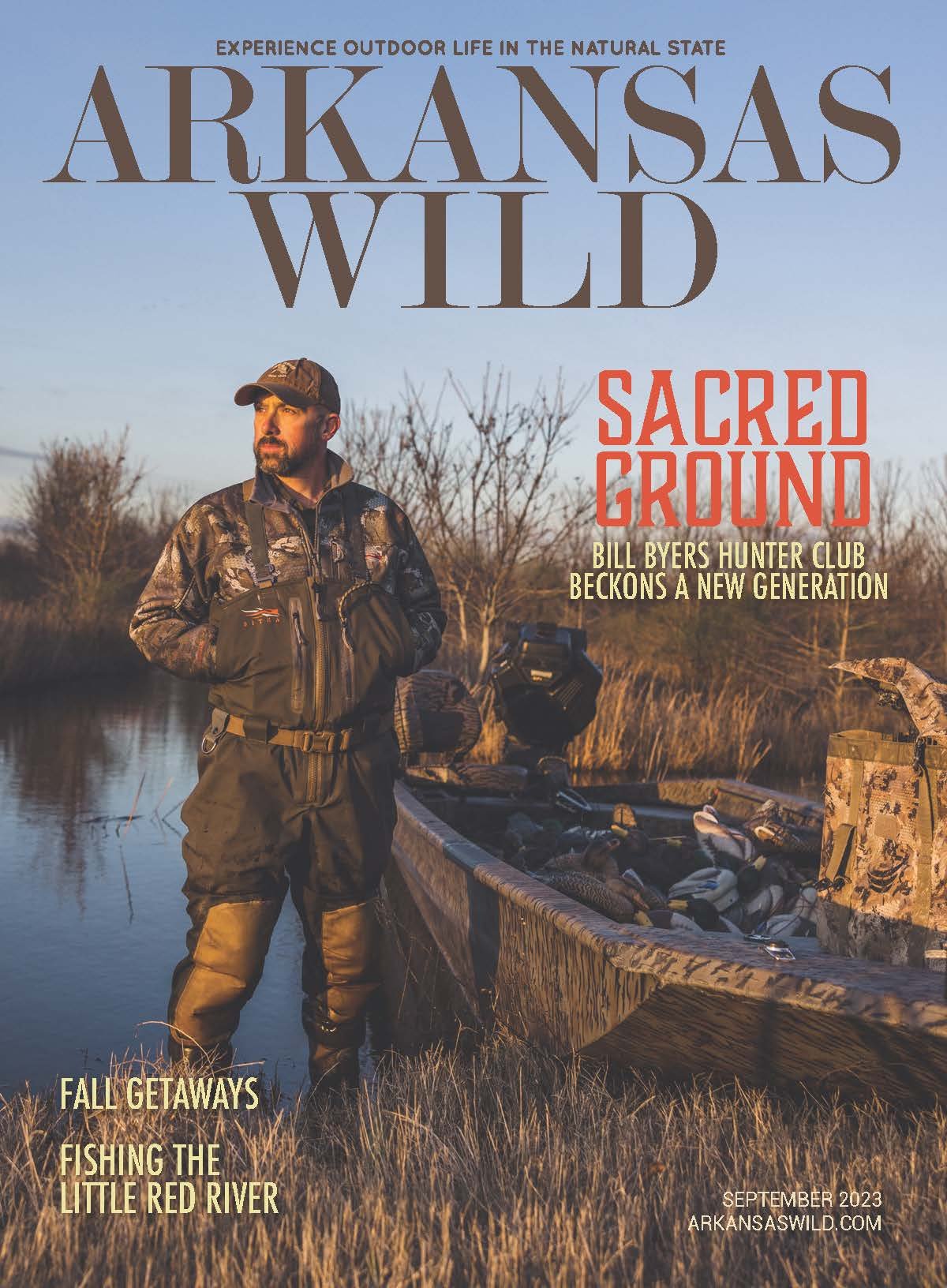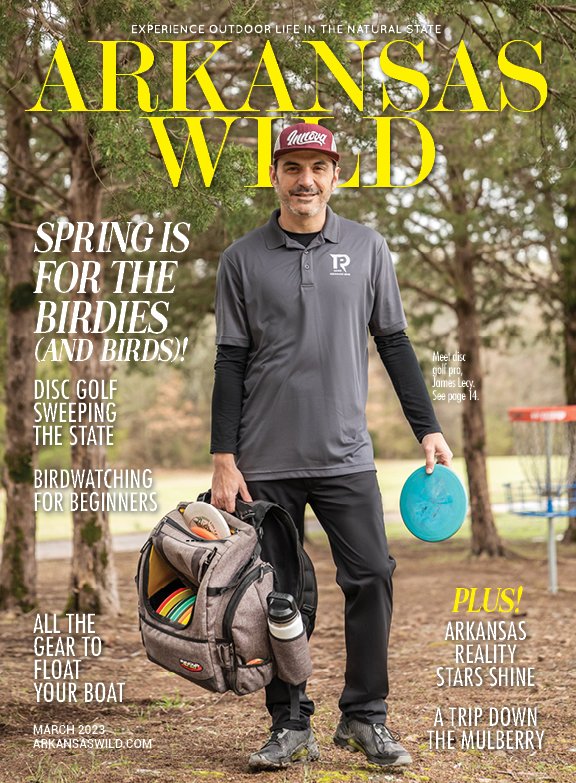“Morning Mist” a watercolor by Duane Hada is an example of plein air, a method in which the
artist paints live subjects on site. This scene was captured at Rim Shoals on the White River.
Duane adds the last few details to a tailwater brown trout as it would appear swimming underwater Below: A portrait of a brown trout.
“I paint what I know, what I love. I’m moved and inspired by what I pass every day,” says Duane Hada, artist and owner of Rivertown Gallery in Mountain Home. Duane began the gallery 17 years ago, the last two of which it’s been in its current location. “Mountain Home isn’t the art capital of anything,” he says, laughing, but notes that tourists and people with second homes in the area are his biggest customers. They come back year after year, and their love for the area urges them to buy original art that reminds them of the scenic location. Duane and his wife live around thirty minutes outside town, at a home in the woods where he also keeps a studio.
“It’s been in me from a young age. I’m a very observant person. I’ve heard it said artists see the world differently than other people, but I only know how I see it,” Duane explains. That urge to create led Duane to the University of Central Arkansas, where he met his wife and graduated with a degree in art education. From there, they moved to Mena, where he taught high school art for several years.
For Love of The Outdoors
Duane has always been an avid outdoorsman. “We lived close to Crooked Creek when I was growing up, so I was fishing all the time,” he recalls. After several years of teaching, he jumped at the chance to work as a fly fishing pro and instructor when The Woodsman in Fort Smith offered him the job.
He used to guide for an average of 188 days per year but now says that much guiding doesn’t leave a lot of time for painting. Today he guides occasionally, and friends get priority. It was his friend Rip Collins who caught the biggest brown trout in Arkansas history on the Little Red River in 1992. Duane was not guiding him on that particular day, but Rip asked that Duane be the one to paint the ten fiberglass replicas made to commemorate his catch. One of those replicas went to the International Game and Fish Commission, one to the International Fishing Hall of Fame, and yet another sits in Rivertown Gallery. “That was a neat honor,” Duane says.
While fiberglass replicas have replaced skin mounts as the most popular way to memorialize a good catch, Duane also carves and then paints fish replicas from wood, a more traditional method. He comments that he’s responsible for many of the wooden fish you see being used as signs or decorations at businesses around the state.
Style
Many artists stick to one style, but Duane explores several. Some of his paintings are Impressionist—they are meant to capture the light, the color, the feel of a scene as he paints it. Some, like trout images painted from photos, are very precise, while still others are more “loose,” he says.
In 1987, Duane painted the Arkansas trout stamp, which he credits as his first real launch into national recognition. As a result, Duane comments, “I’ve kind of been labeled as a fish artist, but that’s not all I do.” Indeed, his gallery is full of beautiful, diverse scenes from the Ozarks—paintings of landscapes, turkey and other wildlife.
The gallery is filled with outdoor-themed art that ranges from paintings to carvings to chairs. Rivertown Gallery is located at 3512 US-62 in Mountain Home.
Lately, Duane has been doing more plein air paintings. He decided several years ago to travel the entire White River—about 722 miles—and do watercolors of the journey. It took him a couple years, as he didn’t do the entire trip at once, but it resulted in a stunning collection that was eventually published as a book, along with poetry written by his brother Ken, responding to select locations along the journey. A collector was so impressed with the book he purchased the entire collection, which he later donated to Arkansas State University to be put on permanent display.
Fastest Brush
When he was in college, a portfolio was required to pass several art courses. Some students would show up short on work; Duane always had extra. A fellow student remarked that he “just wasn’t inspired,” to which their instructor remarked that Duane was certainly inspired; perhaps he could share the source of his inspiration. Duane and his wife married the year before he graduated, so he responded to the professor, “I wake up every morning and look across the table and think, I’ve got to make some money today!”
Duane once attended a festival in which artists were painting publicly. Many artists completed two paintings a day; Duane, however, finished around ten. “I’m very prolific. I paint daily. Maybe I should slow down, but I can’t. This guy in Colorado was watching me paint and he called me ‘the fastest brush in the west.’” The man asked Duane how long he’d been painting, acknowledging it must have been his entire life. Duane further explains that he and the man he was speaking with are at a point in their art at which, “You’re not thinking, you’re just looking and responding. I’ve got my ten thousand hours. I don’t have to sit there and think, how do I paint a tree? It comes from years of doing and a lot of hard work and experience.”






